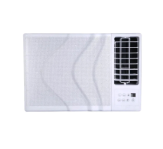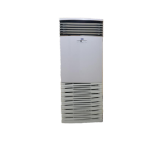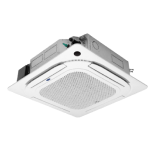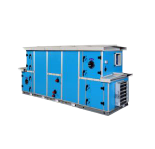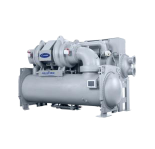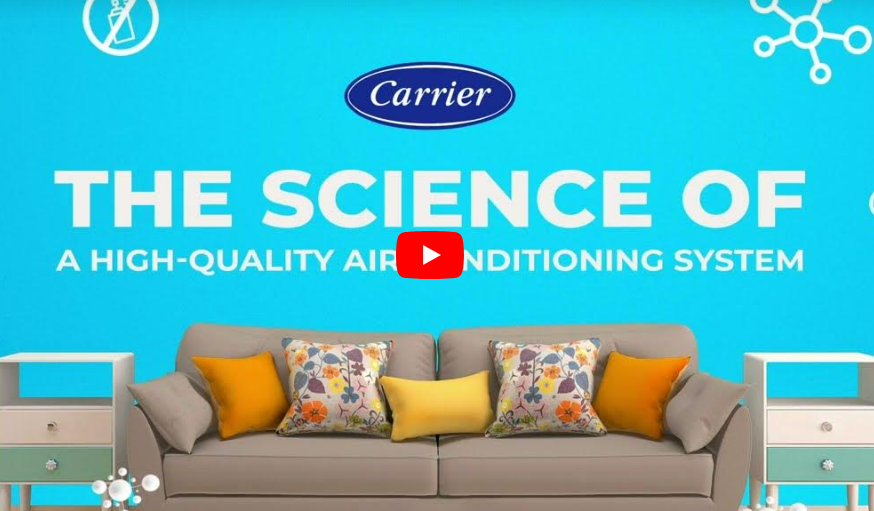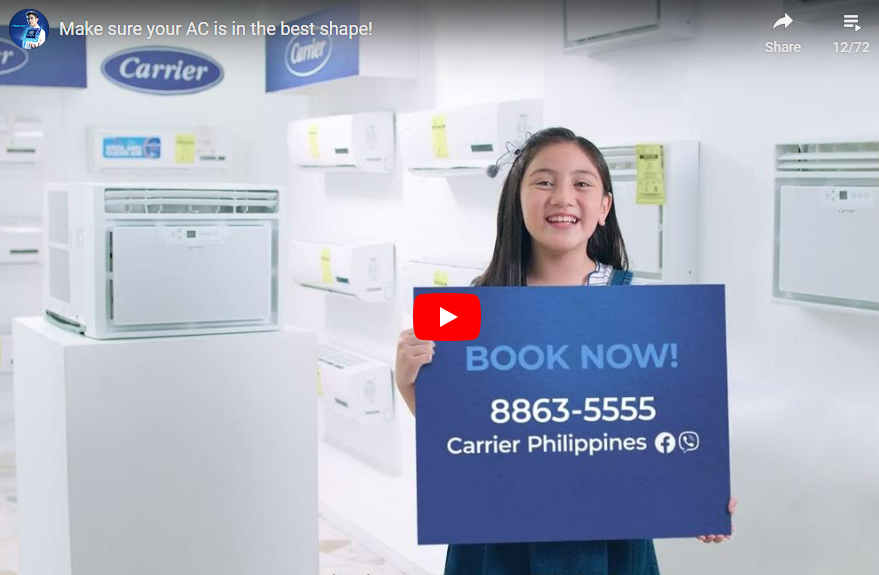5 Things to Look for in an Energy Efficient Aircon
June 29, 2023

When you live in a tropical country like the Philippines, you know it can get HOT. Furthermore, it’s usually the humid kind of hot, the kind that makes your sweat stick to you and can be all sorts of uncomfortable. It’s no surprise then that air conditioning isn’t just a luxury; it’s practically a necessity!
Whether you are thrifty and want the most bang for your buck; are environmentally conscious and want your aircon electricity consumption on the low side (or at the very least, a reasonable amount of consumption); or just want to pick the best option for yourself, you’ll want an aircon that prioritizes energy efficiency. To that end, we’ve listed down 5 key things to consider when picking out an aircon.
1. The Right Size for the Unit
First of all, you’ll want an aircon that’s the right size because it plays an important role in getting the right level of cooling.
If your aircon is too large, it’ll be an absolute power guzzler; it will consume more energy than is necessary while overcooling the room, making it feel damp and uncomfortable. On the opposite end, if it’s too small, it will struggle to cool the room, failing to give you the cooling relief you seek while still burning through electricity. Either way, you won’t be getting the best performance possible.
To really maximize an aircon’s energy efficiency, you’ll have to choose the right capacity for the room, which compares the room’s size against an aircon compressor’s power (the compressor determines how much cooling the aircon can provide).
Here’s a quick and easy aircon horsepower guide to help you gauge the right amount for your room at a glance:
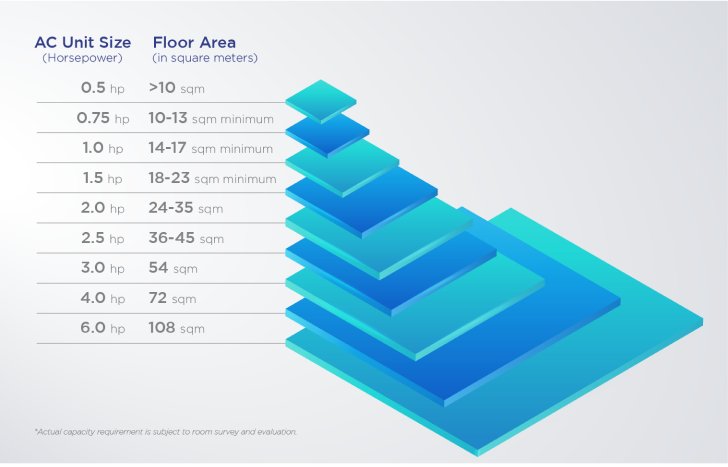
2. The Right Type of Aircon Unit
There are different types of aircon units available (portable, floor-mounted, standing, central, etc.). By knowing your room’s compatibility with a type of aircon and your personal lifestyle, you can eliminate some choices entirely, which in turn can help speed up your decision-making process. Basically, you’ll want an aircon that can 1) be installed in your room in the first place and 2) is suited to your aircon usage habits and maintenance preferences.
For example, in terms of compatibility, if you don’t have an existing provision for a window type aircon and aren’t allowed to cut a hole out of your wall, that automatically rules that type out. As another example, in terms of lifestyle, you may play host to guests that stay over from time to time. If having guests sleep over isn’t a regular occurrence, you may opt to get a non-inverter window or split type aircon instead of the inverter version of either to avoiding spending extra on an aircon you may not use very often.
That said, the most common aircon types used for homes are the window type aircon and the split type aircon so let’s focus on those two.
Window Type Aircon
Window type aircons are generally a great choice for rooms on the smaller end. They come in one piece: the fan and the condensing unit are collected in one “box” that fits into a hole in your wall. They’re generally cheaper upfront than split types, and easier to install, maintain, clean, and repair, even by yourself if you know how to do it, because all the parts of the aircon are contained in that single unit.
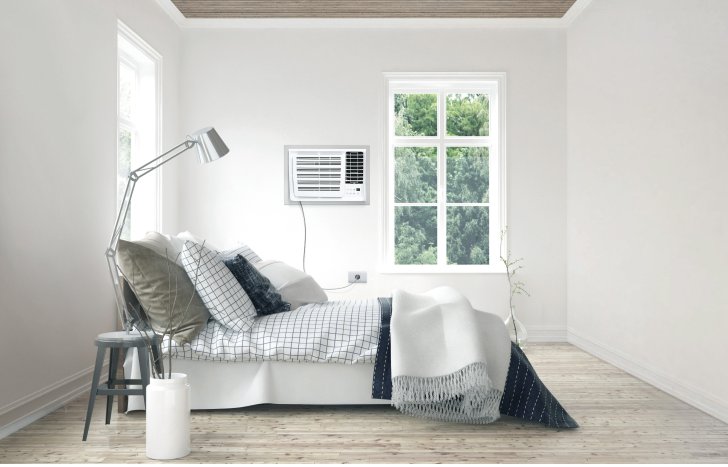
Split Type Aircon
Split type aircons come with a greater initial price tag than window types, but are more energy efficient which can offer savings on electricity costs in the long run. They are larger in size and can be installed on pretty much any wall—not just ones connected to the outside like with window types—by boring out a small hole to connect the fan to the outboard condensing unit. Given their increased complexity, they usually require professional technicians to install, maintain, and service them.
For a more detailed look at the strengths and weaknesses of window type aircons and split type aircons, you may check out this article that takes a deeper look at each.
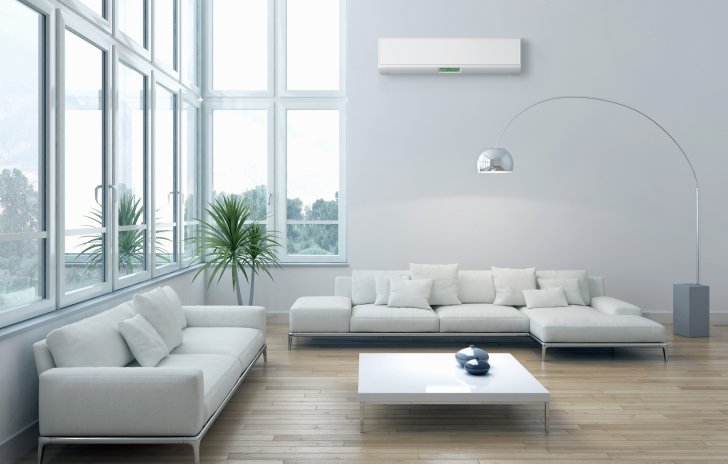
3. A Good Cooling Seasonal Performance Factor Rating
Technically speaking, aircon energy efficiency refers to the amount of energy an aircon uses to cool a space. If an aircon can cool a room at the same rate and with the same level of cooling as its counterpart while also consuming less energy, then the former is clearly more energy efficient. This is important to take note of because a more energy efficient aircon can mean lower energy bills while additionally reducing its environmental impact. Essentially, it’s a win-win situation for everyone.
To give you an idea of how much aircon technology has advanced in the field of energy efficiency, today’s aircons use 30-50% less energy than their 1970s predecessors. Even now, just replacing your existing air conditioning system with the newest model or system can save you 20-40% more in cooling energy costs than the version that came before it, if you don’t include the cost it takes to upgrade.
In the Philippines, energy efficient appliances of a similar type or genre such as refrigerators, microwaves, and aircons all use a star rating system called the Cooling Seasonal Performance Factor or CSPF (previously known as the Energy Efficiency Factor [EEF] or the Energy Efficiency Performance Rating [EEPR]) to summarize the energy efficiency of comparable products. This rating system is implemented by the Department of Energy (DOE) under its Philippine Energy Labeling Program (PELP), so you can trust that products with an accompanying rating meet government and industry standards. One star means it passes the bare minimum of the Department of Energy’s requirements (called the Minimum Energy Performance or MEP), and, as the rating label states, “More stars and higher rating means more savings”.
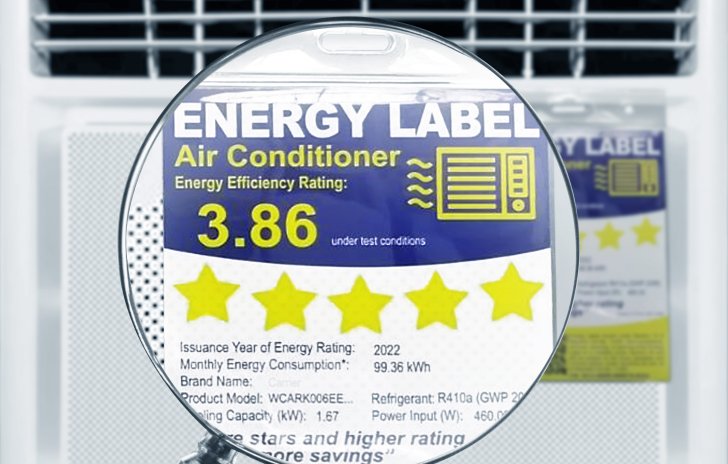
This rating label can be an easy way to help you determine how energy efficient a potential purchase can be and how it compares to other aircons in the same category, price range, and size. However, if you want to be as accurate as possible in figuring out how much it’ll cost to run a particular aircon, take a look at the label’s monthly energy consumption. From there, you can estimate how much you would probably spend with that aircon over the course of a month and then compare that cost with those of other aircons.
In short, out of all the specifications worth comparing across all the aircons you’re considering, the energy efficiency rating and product energy label will probably give you the most useful information to factor in when making your choice.
If you’d like to learn more about the energy rating system of the DOE’s PELP, you can visit: https://enerhiyangatin.ph/program/02-philippine-energy-labelling-program.html
4. Useful Features and Technologies
In addition to improved energy efficiency, other quality-of-life features and technologies have been integrated into aircon units to make them more convenient and functionally efficient to use. It’s expected that most, if not all, aircons already come with built-in timers but the latest models can be high-tech in a way that makes them more user-friendly and intuitive than ever before.
Here are some of the most helpful features we’ve seen when it comes to more recent aircons:
- Multi-speed fans. Great for adjusting wind speed according to preference and reducing energy consumption on lower speed settings.
- Air conditioning unit (ACU) control protection. Some inverter aircon units have fail-safe features that can prevent or limit the damage from unexpected situations like electricity fluctuations and voltage surges.
- Econo Features. Reduces energy consumption.
- Sleep Function. Ensures your aircon doesn’t run longer than intended.
- Self-Cleaning Function. Slows down accumulation of dirt and reduces the amount of effort needed during regular cleaning and maintenance.
5. Value for Money
Value for money can be interpreted in many different ways, with personal interpretations depending on the individual, but in the case of aircons and other appliances, it often refers to how much money it can save you. Ideally, the goal is to have that appliance last long enough to at least recover its purchase value in savings, but if it lowers costs all around, like decreasing your monthly electricity bill or being reliable enough to not break down regularly, if at all, then its value for money certainly goes up.
To begin with, aircons aren’t cheap, especially with electrical fans as a less effective but more economical cooling option. Couple that with the generally high electricity rates relative to other countries in the region, and electricity bills can skyrocket if not managed properly. If you’re going to get an aircon, you’ll want it to last a good, long while.

That means brands with a reputation for excellent durability, reliability, and energy efficiency are highly prized. They get bonus points too if their aircons feature self-diagnosis for maintenance or if they offer good warranties and after-sales services.
If you’d like a recommendation for a durable, energy efficient brand, you may want to consider Carrier aircons. Their designs prioritize energy efficiency, using less energy on average than other brands while still delivering the powerful cooling you’ll want on hot days. They’ve also got a comprehensive selection of after-sales services to make sure your aircon continues to keep you cool long after your purchase.
There are many factors that play a part in maximizing the energy efficiency of your aircon, but the true measure of its efficiency comes from its relation to you. In other words, any aircon that passes the minimum energy performance of the DOE can be efficient in its own way. However, this is only true as long as it conforms to the setting you intend to place it in, how you intend to use it, and your specific criteria for what your aircon should or should not have.
To put it simply, your requirements matter.
Hopefully, with all the information we’ve just gone through together, you’ll be able to make a more informed decision when it comes to purchasing your next aircon and pick one that gives you the best energy efficiency possible when it comes to your setup!
Frequently Asked Questions
Does aircon size matter?
Yes. There is an appropriate aircon size or, more accurately, aircon capacity depending on the size of the room. If the aircon size is too big or too small, the aircon will be monetarily inefficient and still fail to make you comfortable.
What happens if my aircon is too small?
Aircons go through an on and off cycle during operations, turning on to reach the temperature indicated by the thermostat or setting, and turning off once it reaches it. If your aircon is too small, it will have a hard time cooling the room and go through more on and off cycles, increasing its wear and tear.
What happens if my aircon is too big?
When oversized aircons go through their on and off cycle, because it takes a shorter time than an appropriately-sized aircon to reach the desired temperature, it turns off quickly. However, due the briefer period in between the on and off status, it will turn on and off more times during a cooling session. Couple that with the high amounts of energy needed to turn on an appliance, especially one as power intensive as an aircon, and you could face severely expensive electricity bills if your aircon is too big.
How do I know if my aircon is giving me good value for money?
Generally, if it’s durable (doesn’t break often, if at all), lasts for a long time, and reduces your monthly electricity spending when compared to your previous aircon, it is probably giving you good value for money.
What should I look for in an aircon?
1) It should fit your budget. 2) It should have the appropriate capacity for the room it will be installed in. 3) It should be a type that can be installed and can fit in your room. 4) It should ideally have the features you’re looking for. 5) It should ideally have a high CSPF rating.
How do I know if my aircon is energy efficient?
The Philippine Department of Energy (DOE) rates the energy efficiency of appliances using a star system known as the Cooling Seasonal Performance Factor (CSPF) Energy Efficiency Performance Rating (EEPR) or the Energy Efficiency Factor (EEF). The more stars it has (up to a maximum of 5) means an appliance reaches higher levels of energy efficiency, and 1 star means it meets the DOE’s bare minimum standards of being energy efficient.
Should I get a window type or split type aircon?
It really depends on your needs, but generally, it is recommended to get a window type if you want a lower initial cost and if you are content to clean your own aircon. However, if you want better energy cost savings in the long run and efficient top-down cooling where the cooled air falls from ceiling height, you may prefer a split type aircon.

Support 24/7
- Ready to cater to your every need
- Ask a Question

Tried. Tested. Trusted.
- Our rigorous tests and original parts ensure excellent qualitytest

Carrier Authorized
- Our skilled technicians undergo extensive training so your unit is in good hands
- Visit Customer Care
